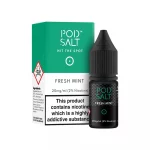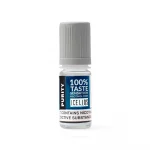Introduction: In the ever-evolving landscape of vaping, myths and misconceptions abound. From health concerns to regulatory issues, separating fact from fiction can be challenging. In this comprehensive blog post, we’ll debunk common vaping myths, providing evidence-based insights to help you navigate the vaping community with clarity and confidence.
Myth #1: Vaping is as Harmful as Smoking Fact: While vaping is not entirely risk-free, numerous studies have shown that it is significantly less harmful than smoking. Unlike combustible tobacco products, vaping does not involve combustion, which eliminates many of the harmful chemicals produced by burning tobacco. Public Health England, among other health organizations, has endorsed vaping as a safer alternative to smoking for adult smokers looking to quit.
Myth #2: Vaping Causes Popcorn Lung Fact: Popcorn lung, or bronchiolitis obliterans, is a serious lung condition linked to exposure to diacetyl, a chemical found in some flavorings. While diacetyl has been detected in certain e-liquid flavors, it is present at much lower levels than in traditional cigarette smoke. Moreover, reputable e-liquid manufacturers have phased out the use of diacetyl and other harmful additives, minimizing the risk of popcorn lung.
Myth #3: Secondhand Vapor is Harmful Fact: Unlike secondhand smoke, which contains thousands of toxic chemicals, secondhand vapor poses minimal risk to bystanders. Studies have found that the levels of harmful chemicals in exhaled vapor are significantly lower than those found in exhaled smoke. While more research is needed to fully understand the long-term effects of secondhand vapor exposure, current evidence suggests that it is unlikely to cause significant harm to non-vapers.
Myth #4: Vaping is a Gateway to Smoking Fact: The notion that vaping serves as a gateway to smoking among young people has been debunked by numerous studies. In fact, research indicates that the majority of young people who vape have already experimented with smoking or were at risk of smoking regardless of vaping. Additionally, smoking rates among youth have continued to decline as vaping has become more popular.
Myth #5: Vaping is Just as Addictive as Smoking Fact: While vaping products contain nicotine, which is addictive, the addictive potential of vaping is generally lower than that of smoking. Vaping devices allow users to control their nicotine intake by adjusting nicotine levels in e-liquids or using nicotine-free options. Moreover, many vapers report using vaping as a smoking cessation aid, successfully reducing or eliminating their dependence on nicotine over time.
Conclusion: As the vaping community continues to grow, it’s important to separate fact from fiction when it comes to common myths and misconceptions. By debunking these myths and providing evidence-based information, we can foster a better understanding of vaping and promote informed decision-making among vapers and non-vapers alike. Whether you’re a seasoned vaper or considering vaping as an alternative to smoking, arming yourself with accurate knowledge is key to navigating the world of vaping with confidence.





